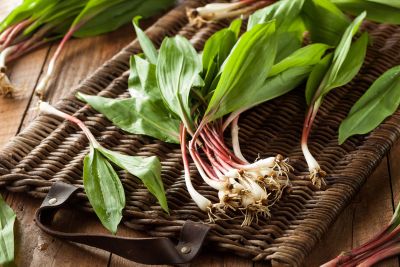Check out these potential wild vegetable plants and get tips on their care.
What are Wild Vegetables?
Foraging is a fun way to introduce wild and natural foods to your family, but you might also consider growing wild vegetables. Since these foods are native and have been adapted to local weather and other conditions, wild vegetable care is minimal. This makes eating wild vegetables as easy as walking out your back door and harvesting them. Where you live determines what vegetables grow in nature. Most regions have a list through a college or university of local wild food. What grows in India, such as kurdu, may seem exotic to those of us in North America with yellow dock in our gardens, but the converse would be true. You can grow wild vegetables from other nations, just be sure to match growing conditions for each plant. The easiest and most maintenance-free way to enjoy wild vegetable plants is to use only natives. Such flora is already adept at growing in the region and not as susceptible to diseases and pests.
Choosing Wild Vegetables
You may not know it, but you could already have wild edibles in your landscape. Of course, without knowing their food value you may consider them weeds. Plants such as these include:
Dandelion
Purslane
Milkweed
Brambles
Red Clover
Sheep Sorrel
Violets
Chickweed
Wild Onion
For some additional plant options, you may like to try:
Ramps
Solomon’s Seal
Pond Lily
Purple Stemmed Angelica
Pickerel Weed
Cattail
Wild Grape
Plantain
Miner’s Lettuce
Stinging Nettle
Wild Strawberry
Mulberry
There are a host of other native and edible plants that grow wild in nature or your garden. You can even import some from other countries to fill out your international pantry. There are plants that provide edible seed or spice, wild greens, root vegetables, sprout and spear type vegetables, and more. Select plants that will perform well in your garden site.
Wild Vegetable Care
Many wild vegetables are called weeds by gardeners. Where do these thrive? Generally, in poor disturbed soil, in full to partial sunlight, and often without any direct water. Wild plants are tough as nails and need little special care. Give them average water and perhaps top dress with well-rotted compost, watch for pests and disease, and that’s pretty much it. You don’t even have to till the earth or remove twigs and rocks. Most wild plants adapt to such obstacles easily. Disclaimer: The contents of this article is for educational and gardening purposes only. Before using or ingesting ANY herb or plant for medicinal purposes or otherwise, please consult a physician, medical herbalist or other suitable professional for advice.
